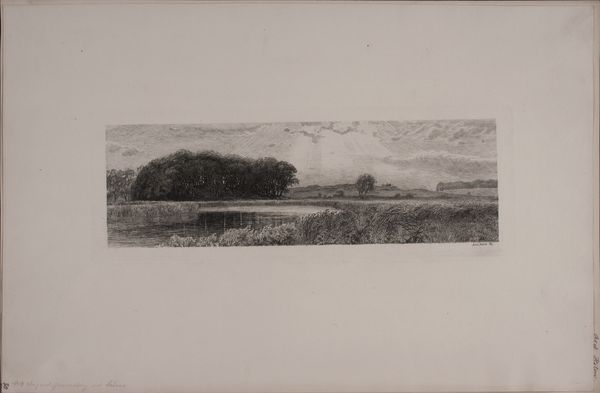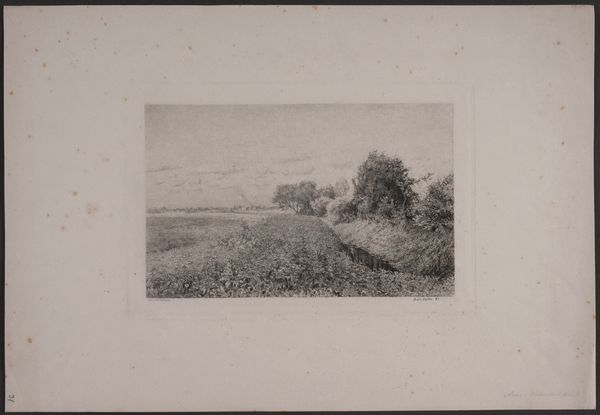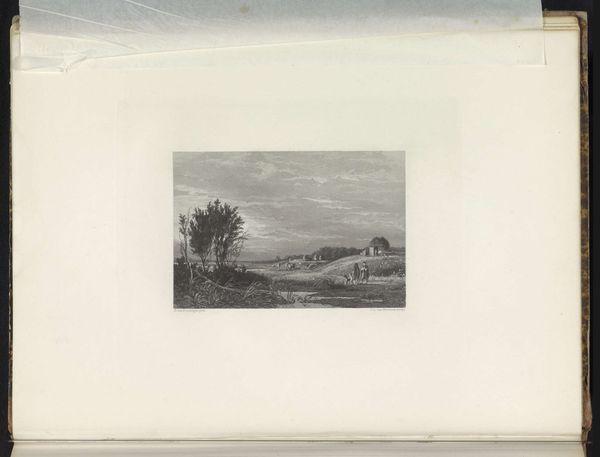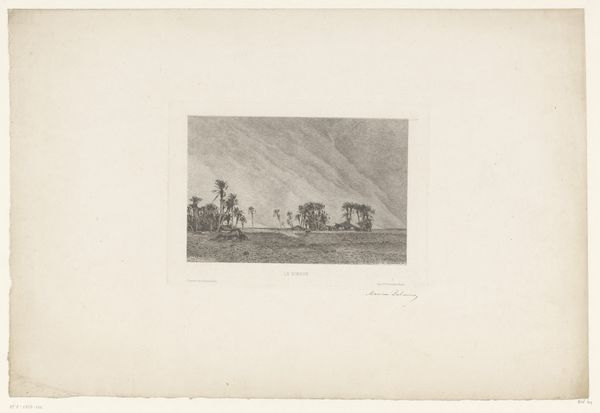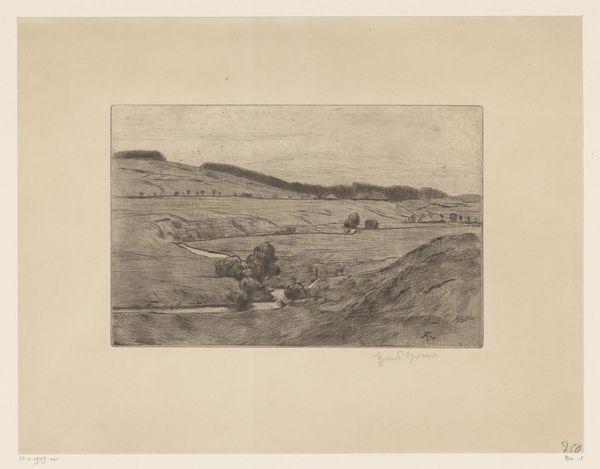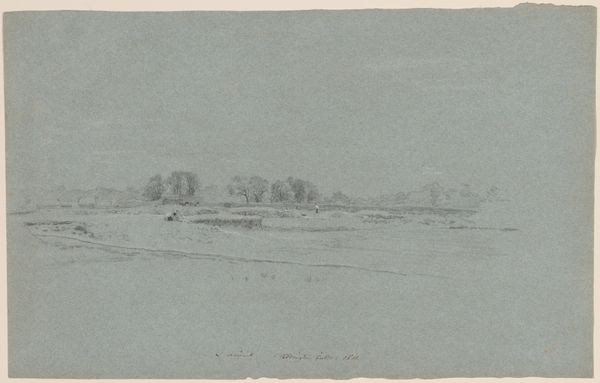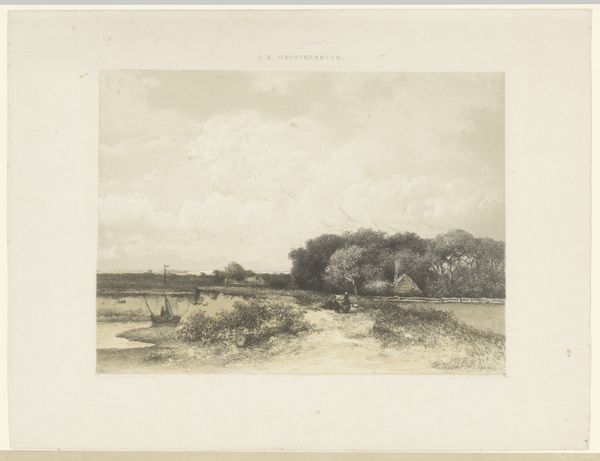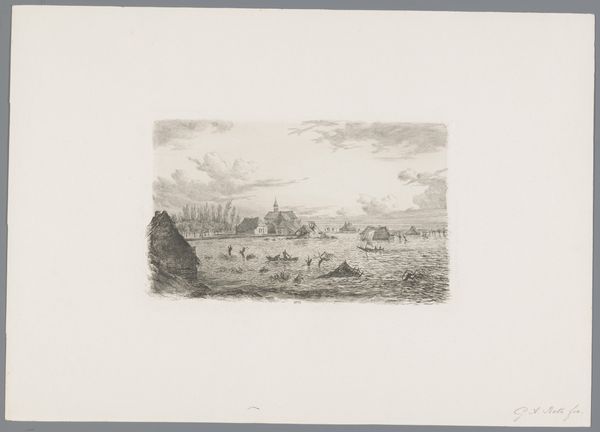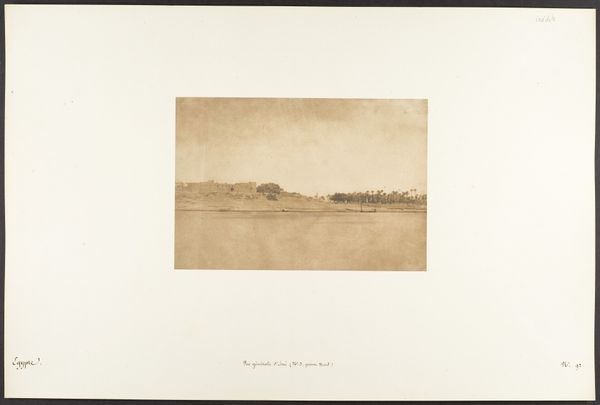
drawing, print, etching
#
drawing
# print
#
etching
#
landscape
#
realism
Dimensions: 128 mm (height) x 362 mm (width) (Plademål)
Curator: Axel Holm’s "Majaften ved Brønshøj," or "May Evening at Brønshøj," created around 1895, offers us a glimpse into the Danish countryside through the medium of etching. Editor: It has a quiet solemnity, doesn’t it? The low horizon, the subdued greyscale, there's an undeniable weight, perhaps melancholic, despite the title hinting at springtime. Curator: Landscape art of this era often reflected a complex relationship between the burgeoning industrialization and a longing for simpler rural life. The image certainly romanticizes that connection to nature and tradition. Editor: But the muted tones, for me, prevent pure romanticism. There's an honesty here that resists idealization. The landscape isn’t grandiose; it’s ordinary farmland, rendered with visible cross-hatching that reveals the artist’s labor. I sense themes related to agricultural labor and class disparity. Curator: Indeed, Holm’s Realist approach sought to portray subjects accurately, often choosing scenes from everyday life. How that’s represented through public consumption via galleries and museums shaped what viewers perceived to be “true” Danish identity. Editor: And it also raises questions: who is the intended viewer? Is this image meant for urban dwellers seeking a connection to their agrarian roots, or for rural communities reflecting upon their identity? Is there a sense of nationalism implied in representing this landscape? Curator: Art of this time period served an important social function by representing collective identity through images deemed 'acceptable', ‘relatable’ and ‘suitable for national and public institutions’. Editor: These questions invite an exploration of art’s role in shaping identity and preserving collective memory and its relationship with historical socio-political contexts, in ways that make this a landscape of cultural significance. Curator: Reflecting on it, the quiet simplicity of Holm's etching reminds me that representations of 'ordinary life' in art can become loaded with meanings related to identity, power and access, all these years later. Editor: Exactly. This seemingly simple etching sparks vital conversations about the intersecting roles of nature, society, and the representation of identity in 19th-century Denmark.
Comments
No comments
Be the first to comment and join the conversation on the ultimate creative platform.
